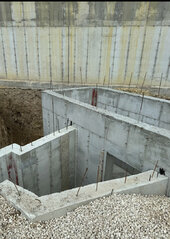Is it unheard of to implement a 3-phase solution for an off-grid solar setup? Load balancing between phases might be tricky with a handful of large current loads intermittently used. (I'm also not aware of many residential products offered in 3-phase, so balancing individual legs would be more important?)
That said, I am installing a 3-phase Mitsu multi-split AC and a 3-phase oven next week as part of an unrelated foreign project (so I'm curious about 3-phase options for off-grid solar)
Just a desire of us guys who like industrial equipment, good for motors to have high starting torque. Also last for ever without so much as needing capacitor replacement.
Several battery or hybrid inverters support connecting 3 (in some cases 2) inverters for 3-phase including Sunny island, Schneider, Sol-Ark, Rosie, Outback, quite a few more I think. Mostly I see 120/208Y, not 120/240V high-leg delta. Some are 277/480V.
When I thought I could get 3-phase replacement for my split-phase residential service affordably, I looked up 3-phase AC units. Didn't see any as inexpensive as split-phase, think they started around $5k vs. $2k.
It is common to feed 3-phase to apartment buildings and condo complexes. Each unit gets 2 legs for 120/208V, L1/N/L2, L2/N/L3, etc. so wired just like 120/240V split phase, but lower 208V for large loads.
Implemented with three 120V inverters, load balancing isn't required but of course you want to distribute reasonably evenly to utilize all available power. I think 3-phase starts to care about imbalanced voltage when going through transformers or into motors.
I tried using a 3-phase Sunny TriPower 277/480V GT PV inverter with 3-phase 120/208Y Sunny Islands, and the transformers cause some problems. In Europe with 240/416Y or other voltage close to that it would work better, no transformer.
Not many 120/208Y GT PV inverters to better to stick with single phase inverters supporting 208V & 240V if you do this.
True, easier to balance multiple 240V loads on 120/240V split phase.
I do use a VFD with 2HP pool pump, but I've found non-PF corrected VFD upsets GT PV inverters.
Either need PF corrected VFD, or use DC coupled or hybrid inverter.
Poor power factor also reduces efficiency of your system.



